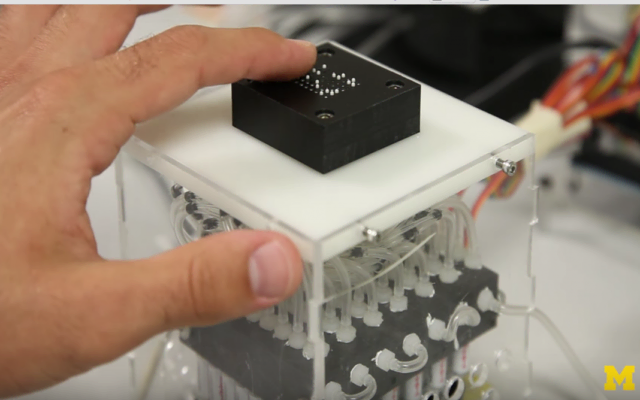Sight is a skill we often take for granted. However not everyone has this ability. Today around 314 million people suffer from sight impairment. We rarely take into account their relationship with technology that, if we think about it, is not simple. The use of smartphones and tablets is extremely difficult for a visually impaired person, and impossible for a person suffering from blindness. But this could change in the near future.
Functions such as TalkBack allow to have a voice feedback and it can marginalize the problem, but it does not allow the actual use of a device. In addition, new technologies, such as e-books replacing 'old-fashioned' books and Maps instead of paper maps, were not accessible before for a blind person and it is difficult now. Recently researchers found a solution that could be revolutionary.
The project was presented at the University of Michigan it and suggests the possibility of building a tablet with a screen that reproduces braille in real time. Until now the only way to read a text in braille was a display made up of a single strip of "pins" that raised or lowered, according to the text that was being played. Sile O'Modhrain, Professor of Music, Dance and Theatre at the University of Michigan (who is visually impaired herself), explained: "Imagine having a Kindle that isn’t a visual Kindle but instead has a tactile surface that can be read by a person who is blind, using braille”. The machines in question operate thanks to a motor that pushes the pin up, allowing to read. For now they are still quite big and uncomfortable. Moreover, this machinery can be very expensive, between 3.000 and 5.000 US dollars.

In future, the tablet will have an approximate cost of 700$ and it will probably be available in five to seven years. Right now researchers can drive a series of connected dots to display a single braille character and they are working on scaling up the system to display characters and dots on a much larger array. "Once that is done, then we would need input from people who can help us develop techniques for manufacturing displays for a mass market" added O'Modhrain. "And then, of course, the display needs to be integrated into a product, which again would depend on a third party developer deciding to use the device in their product".
Source: Wired, Image: Digital Trends


Comments (0)
Share your thoughts and join the technology debate!
No comments yet
Be the first to share your thoughts!